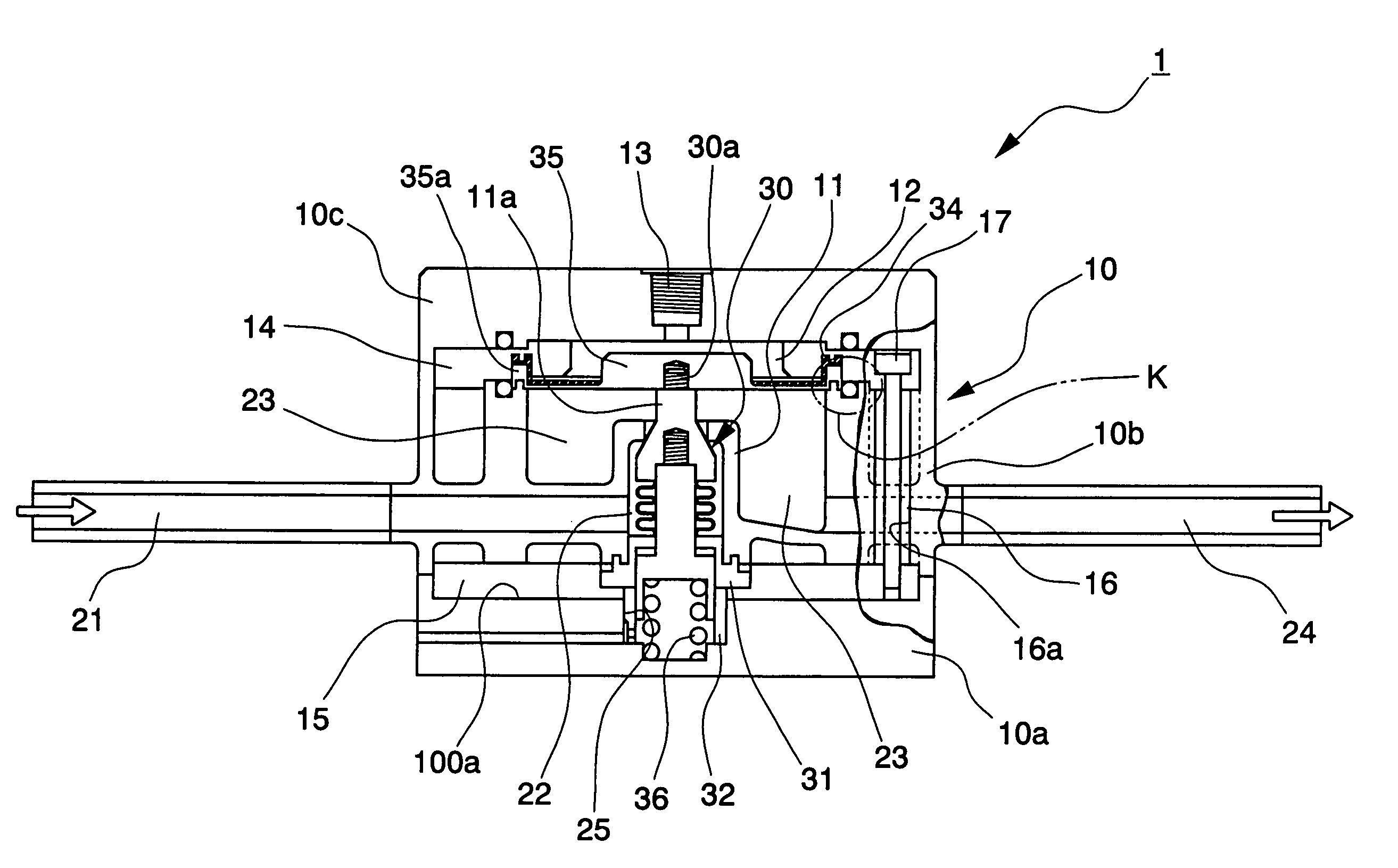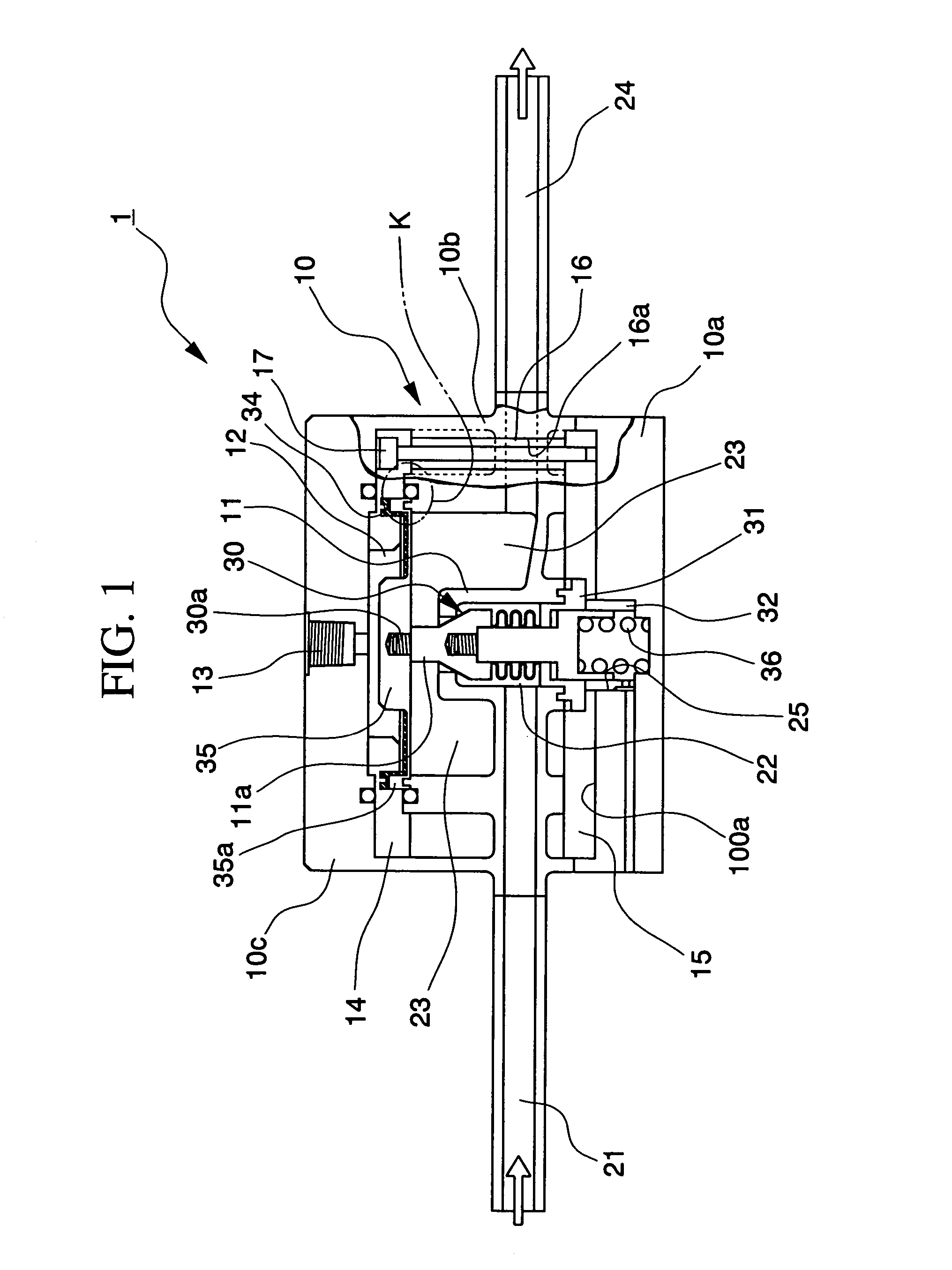Flow regulating device
a flow regulating device and flow amount technology, applied in the direction of diaphragm valves, valve housings, instruments, etc., can solve the problems of severe limitation of the temperature range over which it is possible to perform accurate flow amount regulation, deviation, and damage to sealing structures, etc., to achieve accurate flow amount regulation and high reliability
- Summary
- Abstract
- Description
- Claims
- Application Information
AI Technical Summary
Benefits of technology
Problems solved by technology
Method used
Image
Examples
first preferred embodiment
[0031]FIG. 1 is a sectional figure for explanation of the internal structure of the flow regulating device according to the first preferred embodiment of the present invention. And FIG. 2 is a perspective view for explanation of the structure of a shape preservation member which is provided within its housing. In this embodiment the rated flow amount which is supplied from an outlet port 24 of the flow regulating device 1 which is explained here is from 4 to 35 liters / minute. In addition, in the explanation of the basic construction for regulating the rated flow amount within the above range, the explanation of portions thereof will be curtailed herein, since they are almost the same as the structure of the flow regulating device 1 which has been explained above with respect to FIG. 4, so that the detailed explanation will focus upon the structure of the portions which are related to the present invention.
[0032]A housing 10 which gives this flow regulating device 1 its external appe...
second preferred embodiment
[0052]Next, a flow regulating device 1′ according to a second preferred embodiment of the present invention will be explained. It should be understood that this flow regulating device 1′ according to the second preferred embodiment of the present invention differs from the above described flow regulating device 1 according to the first preferred embodiment of the present invention by the addition of a supplemental structure for hyper-fine operation of the valve element 30, the structure and operation related to this feature will be described in detail, while, as far as the other structures of this device 1′ are concerned, the explanation thereof will be partially curtailed, since they are the same as in the case of the first preferred embodiment described above.
[0053]The flow regulating device 1 of this second preferred embodiment of the present invention which is shown is one which comprises a piston 40 which somewhat presses downwards the valve element 30, via a diaphragm 35, in o...
PUM
 Login to View More
Login to View More Abstract
Description
Claims
Application Information
 Login to View More
Login to View More - R&D
- Intellectual Property
- Life Sciences
- Materials
- Tech Scout
- Unparalleled Data Quality
- Higher Quality Content
- 60% Fewer Hallucinations
Browse by: Latest US Patents, China's latest patents, Technical Efficacy Thesaurus, Application Domain, Technology Topic, Popular Technical Reports.
© 2025 PatSnap. All rights reserved.Legal|Privacy policy|Modern Slavery Act Transparency Statement|Sitemap|About US| Contact US: help@patsnap.com



